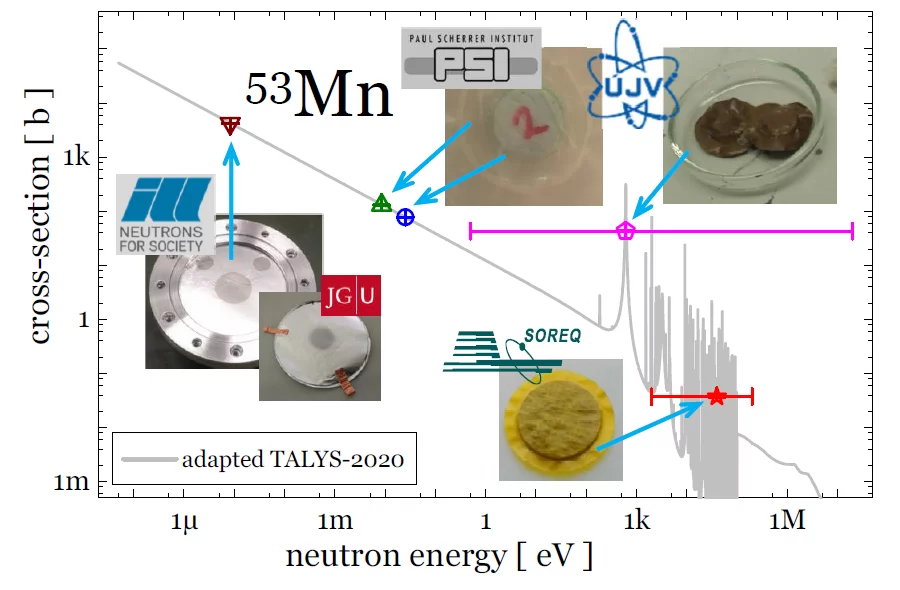The Swiss Neutron Science Society as one of the representatives of the neutron scatterers in Switzerland honors each year young scientist in recognition of a notable scientific achievement in the form of a PhD thesis or to a nominee with an exceptional track record in neutron science.
In 2020 one of the prizes sponsored by SwissNeutronics was awarded to Jiri Ulrich (LRC/PSI) for his doctoral thesis on “High precision nuclear data of Mn-53 for astrophysics and geosciences”.
(https://sgn.web.psi.ch/sgn/young_scientist_prize.html)
Manganese-53 (53Mn ) is a short-lived cosmogenic radionuclide mainly produced during supernovae explosions and by spallation reactions of high-energy cosmic rays in extraterrestrial and meteoritic materials or in soils also on Earth in much lower amounts.
The goal of the PhD thesis of Jiri Ulich was the determination of relevant nuclear data (half-life and neutron capture cross-section) of this radioisotope with those low uncertainties as required for the use in basic and applied astrophysical and geological research.
To reach this a stock of several 1019 atoms 53Mn was produced from highly activated accelerator materials exposed to the PSI proton beam. Different chemically purifications tuned to the demands of the envisioned experiments were performed to obtain tailored samples.
The 53Mn content in all produced samples was quantified separately by multi-collector ICP-MS measurements at the PSI HotLab.
The thermal capture cross-section was determined by the activation method in two independent measurements, with cold neutrons at PSI (Switzerland) and with thermalized neutrons in the nuclear reactor of NRI Rež (Czech Republic), respectively. The obtained result is consistent with available data evaluations, but has an order of magnitude lower uncertainty with respect to all previous experiments. In addition, the resonance capture integral was extracted from the reactor activation data for the experimental epithermal neutron spectrum. These results were published in Physical Review C 102(2), 024613 (https://doi.org/10.1103/PhysRevC.102.024613).
The capture cross-section of 53Mn at s-process relevant energies was obtained from activation experiment with quasi-maxwellian neutron spectrum at the SARAF facility (Israel). This is the first measurement at stellar neutron energies conducted for 53Mn. The resulting value fulfills the precision requirements for usability in s-process reaction networks.
Several kBq of 53Mn was mass separated by laser resonance-ionization mass spectroscopy at University Mainz (Germany) in order to provide isotopically pure samples for the measurement.
This material was used to measure the capture cross section of 53Mn at very cold neutron enegies at the Institut Laue-Langevin (France)
In addition with this material the half-life of 53Mn was measured by liquid scintillation counting utilizing the TDCR and CIEMAT/NIST efficiency tracing methods at the national metrology institutes PTB (Germany) and LNHB (France) by an order of magnitude reduced uncertainty.


